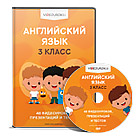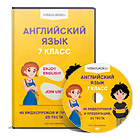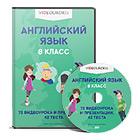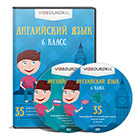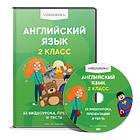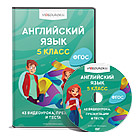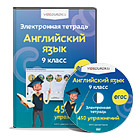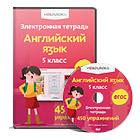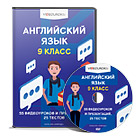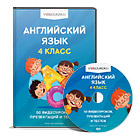you have for breakfast” Language structure I weight 105 pounds. A kilo equals
2.2 pounds. How much do you weight.
nourishment, to eat only healthy and useful food, to have their breakfast, dinner
and supper meals in time.
communication on the tasks. Talk on the topic in pairs and in group,
practicing habits. Asking and talking about meals.
| Stages of the lesson | Teacher’s activity | Pupil’s activity | time |
| I. Introduction | Greeting 1.Good afternoon boys and girls. Sit down, please. Let me introduce myself, my name is Serikhankyzy Akbota. Today I’m your teacher.
2.Talking to duty -Who is on duty today?
-Who is absent today? |
P-s -Good afternoon teacher
P1:-I’m on duty today P2:-All are present/ _ pupils are absent. |
|
| II. Checking- up of the home task | Ok, very nice. What was your home task? Ok, let me to check up your copy books? Are you ready?
| Our home task was ex…
Pupils -Yes, we are ready |
|
| III. Presentation
| Well, let’s start our lesson. The theme of the lesson for today is “Having meals, menu”. Today we’ll learn expressions and introduce with new words, work with text. You’ll enlarge your vocabulary. It’s very interesting theme, I think.
|
Pupils listen to the teacher
|
|
| IV. Vocabulary presentation | -Ok, look at the blackboard. We have some new words connected with the new theme. a) teacher reads new words. weight[weit] cалмақ equal [i:kwәl] теңестіретін. bottle ['bɔtl] - бутылка
glass [glɑːs] - стакан, бокал
plate [pleɪt] - тарелка,
spoon [spuːn] - қасық
fork [fɔːk] - шаңышқы
knife [naɪf] - пышақ
napkin ['næpkɪn] - салфетка
tablecloth ['teɪblklɔθ] - скатерть
menu ['menjuː] – меню first course[fә:st kɔ:s] – бірінші тамақ main course[mein kɔ:s] –негізгі тамақ, ыстық; garnish (side dish)[ga:ni∫] - гарнир; snack[snæk] – жеңіл тамақ; b) teacher reads new words again.
c) teacher asks them to read new words individually.
d) copy out this words in their vocabulary. |
Pupils listen to the teacher
Pupils repeat them in chorus Pupils read one by one P4,P6,
Pupils copy out new words in their vocabulary.
|
|
| V. Vocabulary practice.
Warm up
| - ok, boys and girls
1Weight a) теңестіру 2equal b) нож 3bottle c) десерт
4glass d) бірінші тамақ
5plate e) жеңіл тамақ;
6spoon f) негізгі тамақ,
7fork j) гарнир;
8knife i) скатерть
9napkin h) бутылка
10tablecloth k) cалмақ 11first course l) тарелка, 12main course m) салфетка 13garnish n) стакан, бокал 14dessert o) вилка 15snack p) ложка
Ex.10 p.152 read and repeat the English words.
-Good, boys and girls now, we read a text and translate it. We talk about meals. -read the text. English meals. English people eat marmalade, scrambled eggs, bacon and cornflakes in the morning. They eat cornflakes with milk. They usually eat fish and chips, meat with potatoes, hamburgers for lunch. British and American boys and girls take pocked lunches in lunch boxes to school. They like oranges, apples, cheese, ham sandwiches, banana sandwiches, raisins, yoghurt and chocolate. English people drink tea with biscuits and they likes drink tea with chocolate. Englishmen have their dinner in the evening.
-Translate the text.
teacher reads a rhyme
Handy Spandy, sugar candy,
French almond rock;
Bread and butter for your supper,
Is all your mother's got.
Molly, my sister and I fell out,
And what do you think it was all about?
She loved coffee and I loved tea,
And that was the reason we couldn't agree.
Get up, little Freddy! Breakfast is ready. Butter and cheese, All that you please.
Pupils reads a rhyme
| Pupils listen to the teacher 1-k 2-а 3-h 4-n 5-l 6-p 7-o 8-b 9-m 10-i 11-d 12-f 13-j 14-c 15-e
Pupils reads P1-P2; P3-P4…P8-P9
|
|
| VI. Grammar presentation
| Жұрнақ – жалғанған сөзінен жаңа сөз тудыратын немесе сөзді түрлендіретін қосымша. Қазақ тіліндегі жұрнақ мағынасы мен қызметіне қарай екіге бөлінеді: 1.сөз тудыратын жұрнақтар өзі жалғанған сөзінен жаңа сөз тудырады. Мысалы, “жылқы-шы”, “біл-ім”. 2. сөз түрлендіретін жұрнақтар өзі жалғанған сөзіне үстеме мағына қосып, сөздің тұлғасын өзгертеді. Мысалы, “көк-шіл”, “сары-лау”, Суффикс –ly. Зат есім түбірге жалғанады. Сын есім шығады. Friend доc – friendly достық
Hour сағат – hourly әр сағат сайын Суффикс –y. Зат есім түбірге жалғанады. Сын есім шығады. Wind жел – windy желді
Noise шу – noisy шулы Суффикс –able. Сын есімге жалғанады да, бір нәрсенің болатының және оның қабілетін білдіреді. Eat тамақ жеу eatable жеуге жарамды
Change өзгерту changeable Суффикс –ous. Латын сөздерге жалғанатын жұрнақ. Mountain тау - mountainous таулы
Vary өзгеру – various өзгеретін
Volume көлем – voluminous көлемі Суффиксы –ant, -ent. Латын тіліннен шыққан жұрнақтар.
Differ түрлі – different әр түрлі
Expect күту – expectant күтілетін
|
Teacher- P1- P2- P3-…
|
|
| VIII. Grammar practice
| -Ok, boys and girls Суффикстердің астын сыз. mathematician, musician, sadly, slowly likely, lovely, expectant, various, hourly, changeable, windy, friendly. Ex.2 at p.151 read and practice. What do you eat for breakfast? - I eat … for breakfast -I have… for breakfast What do you eat foe dinner?
What do you eat for supper?
| Pupils:
Pupils:
- I eat … for dinner -I have…for dinner
- I eat …for supper -I have… for supper
|
|
| IX. speaking and writing | Ex.5 at p.150 listen and practice. Asel: Jenny, what do I write here? Jenny: you write your weight, height, the colour of your eyes and hair. Asel: I weight about 47 kilos Jenny: Okay. One kilo is 2.2pounds. So you weigh about 103 pounds.
Ex.7 at p.152 talk to your classmate.
Ex.8 p.152 listen and repeat.
|
P-s
|
|
| X. Conclusion
|
A spoon is dear when lunch time is near.
There's no such thing as a free lunch.
Breakfast like a king, lunch like a queen and dine like a pauper.
After dinner sit a while, after supper walk a mile.
Hope is a good breakfast, but a bad supper.
No song, no supper.
If you laugh before breakfast you'll cry before supper.
Ex.12 p.152 interview your group mates. Ex: Do you beef for lunch.
| P-s P1 Ложка дорога к обеду.
Не бывает бесплатных обедов.
Завтрак съешь сам, обед раздели с другом, ужин отдай врагу.
После обеда посиди, после ужина милю пройди. Надежда - хороший завтрак, но плохой ужин. Нет песни - нет ужина.
Посмеёшься до завтрака - поплачешь до ужина. |
|
| XIII. Home task | Open your diary’s and write your home task. "ex. 13 at p.153".
| Pupils opened and write your home task. |
|
| XIV. Evaluation | So, boys and girls! Our lesson is over. Thank you very much. I am satisfied with you. You were clever, so hardly and bright all over the lesson. Now I want to evaluate you P1: you are the best one who worked hardly today. Your English is very good and I’ll put excellent. P2: you want to work industrious, but you have some mistakes today. I’ll put you good. -Do you agree with me? -Stand up please! Good bye children! |
P-s - Yes Good bye teacher. |
|
